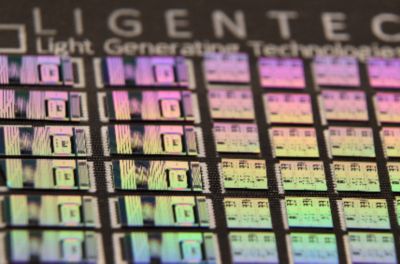ケーススタディ
-
-
学生向け無料ソフトウェアにアクセス
Ansysは次世代の技術者を支援します
学生は、世界クラスのシミュレーションソフトウェアに無料でアクセスできます。
-
今すぐAnsysに接続!
未来をデザインする
Ansysに接続して、シミュレーションが次のブレークスルーにどのように貢献できるかを確認してください。
国および地域
無料トライアル
製品およびサービス
リソースとトレーニング
当社について
Back
製品およびサービス
「Ansys Lumericalシミュレーションソフトウェアは、精度、互換性、使いやすさ、サポートの点で当社の基準を満たしており、フォトニックデバイスを自信を持って設計および最適化することができました。このソフトウェアにより、製造プロセスデータを簡単に統合して、実用的で現実的なシミュレーション結果を得ることができました。また、ソフトウェアをカスタマイズできるため、高度な最適化手法を活用しながら、特定のニーズに合わせて複雑な設計を調整できます。質の高いテクニカルサポートとリソースにより、ソフトウェアを最大限に活用することができました」
— Mariam Aamer Benelfaquih氏(LIGENTEC社、R&D部門シニアフォトニック設計エンジニア)
フォトニクス集積回路(PIC)技術と応用の進歩により、新世代のフォトニクス製品が登場するたびに、性能基準が高くなり複雑さが増しています。製造可能性と収率を確保しながら、厳しい性能と複雑さの要件を満たすことは、PIC業界が直面する重要な課題です。
課題
設計プロセスは、多くの反復、製造、テストを伴うため、困難で時間がかかり、費用も高価になります。LIGENTEC社は、複雑なPICおよびフォトニックデバイスを最適化して、低い挿入損失、最小背面反射、コンパクトなフットプリント、低クロストークといった複数の性能指数を持つ最適化された導波路交差など、特定の性能基準を満たすことを目指しています。

エンジニアリングソリューション
LIGENTEC社は、導波路交差の設計と最適化のためにAnsys Lumerical FDTDのフォトニック逆設計(PID)機能を使用しました。同社のエンジニアリングソリューションには、構造の初期ジオメトリの指定、シミュレーションパラメータと材料特性の定義、設計目標と制約条件の設定、最適化アルゴリズムの実行による最適化設計の生成が含まれていました。

ベネフィット
- 設計最適化の目標と制約のカスタマイズ。
- 挿入損失、フットプリント、クロストークなどの複数の性能指数の協調最適化。
- 効率的で高速なvarFDTD法と、Lumericalの強力な3D FDTD法、およびPID最適化と、そのシームレスな統合により、設計サイクルの効率が向上。
- 広大な設計空間を探索し、従来の最適化手法では困難な最適化を実行。Lumerical varFDTDは設計空間の高速探索を可能にし、完全な3次元FDTDシミュレーションから高精度な結果を抽出。
- 新しい導波路交差を設計して、フットプリントを4分の1に削減しつつ、0.02dB未満の低損失性能/-60dB未満の交差とクロストークを維持。
- プロセスバリエーション解析により、プロセスバリエーションが3σの堅牢性を備えた製造可能な設計を実現。
- コンピュータ支援設計(CAD)環境で、最適化された設計を、スクリプトベースで物理マスクレイアウト(.gdsファイル)に変換。ファウンドリが独自のプロセスに従って製造可能。
- このワークフローにより、同社のGDSレイアウト生成を合理化し、エラーの原因を排除。
- 測定プロットに示すように、設計のパフォーマンスを正確に最適化して予測。
- プロセスの変動の影響とその制限を考慮できるため、設計プロセスの早い段階で潜在的な問題を特定して最初から適切な設計が可能。これにより、設計の反復が不要になり、高価な製造失敗のリスクを最小限に抑えることができる。

さあ、始めましょう
エンジニアリング課題に直面している場合は、当社のチームが支援します。豊富な経験と革新へのコミットメントを持つ当社に、ぜひご連絡ください。協力して、エンジニアリングの障害を成長と成功の機会に変えましょう。ぜひ今すぐお問い合わせください。